#water issues
Photo

479 notes
·
View notes
Text
As an environmental problem researcher:especially about water issues (2/2)
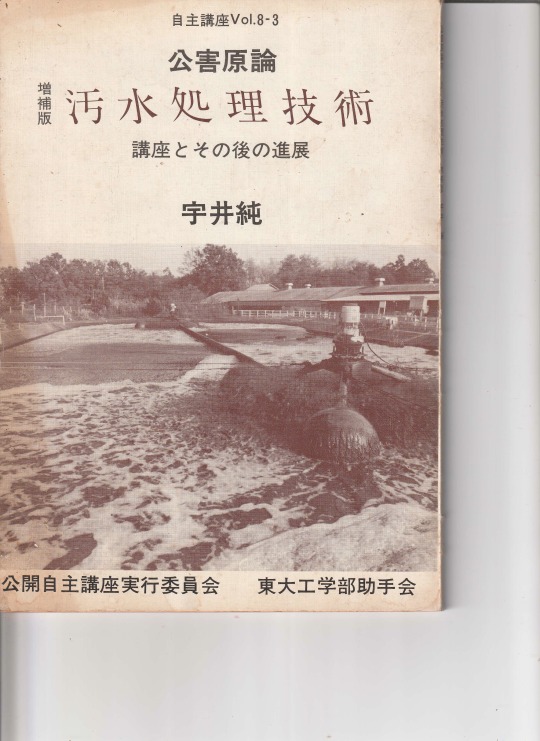
A Book written by Jun Ui(宇井純)
Sewage treatment technology introduced by Jun Ui: Oxidation Ditch
Mr.Jun Ui, who is now dead and was a leader in pollution problems (and one of my teachers: an assistant in the Department of Urban Engineering, Faculty of Engineering, University of Tokyo), was a versatile person, but he went to see a sewage worker in Delft, the Netherlands. He visited the treatment plant, became interested in the facility: Oxidation Ditch (translated into Japanese, "Oxidation Groove"), and stayed for several days to observe it. According to the engineer who developed it, "Many Japanese researcher visit this facility, but no one else stays and observes for a long time like you."
Jun Ui understood the principle of this oxidation ditch, and he himself built a sewage treatment plant for individuals and groups that he understood in order to spread this technology to Japan, and conducted demonstration experiments. I have been involved in it for a while.
The basis of sewage treatment technology is the decomposition of "organic matter" in water. Organic matter is a molecule formed by carbon atom (C) as a nucleus, but there are almost infinite types of this molecule. Sugar, soy sauce, gravy, manure ... there is no limit to the number. Anyway, it is a process of sending oxygen (O) in the air into water, reacting it with organic matter, converting it to carbon dioxide (CO2), and returning carbon to the air. It is called aeration or oxidation.
This method, now called the "activated sludge method," introduces healthy microorganisms in the soil into the water and completes the oxidation by the action of these microorganisms. Certainly, organic matter can be decomposed fairly well in this process. However, sewage cannot be completely purified by itself. Pollutants other than carbon include nitrogen (N) and phosphorus (P). These are difficult things. Even if organic matter is removed and the water looks clean at first glance, if N, P, etc. remain, they will come out into the environment, and algae etc. will propagate using these as minerals, and organic matter will be produced again. The water is polluted and the precious oxidation becomes meaningless.
At this time, the sewage treatment technology shows two directions. One is the "continuous" process and the other is the "batch type" process. The continuous method is the current mainstream sewage treatment method in which sewage flows out of the plant and new sewage always flows into the pond. Therefore, multiple ponds are set up, and one pond "has only one function." On the other hand, the batch type has multiple functions in one pond. It has four functions of "inflow, stirring, precipitation, and outflow". Jun Ui chose this batch type, not to mention the oxidation ditch (oxidation groove).
The process of removing C is called (primary processing), but in the case of a continuous system, the process of removing N and P is processed in the second and third ponds that specialize in N and P. (Secondary and tertiary processing). In particular, in the case of N, activated sludge deprives HNO3 of O from N, which has changed from ammonia (NH3) to nitric acid (HNO3) as a result of treatment and oxidation without adding O, and N becomes N2 in the air. It will come out (denitrification). This is a chemical reaction called reduction, which is the opposite of oxidation. To remove N, it is necessary to repeat these two reactions. However, in the case of the continuous type, since a large amount of O has already been added and aerated, there is a lot of waste in removing it, and oxygen deficiency and oxygen excess are repeated, resulting in a high cost of sewage treatment. It will jump up. Indeed, sewage treatment is a gold eater. Think about it, the power that an air conditioner takes to drive air is enormous, but if it's water, the cost of sewage treatment is even higher.
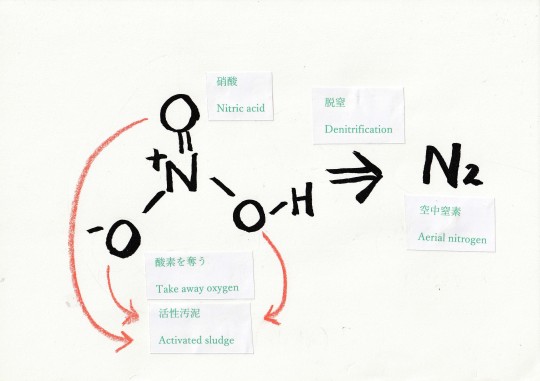
Denitrification
In the case of the batch type, depending on the operation, all of the first, second and third processes can be performed in one pond. By performing the steps of aeration (stirring) and precipitation, the above-mentioned denitrification controls the oxygen concentration to the limit of oxygen concentration that can be changed into two steps at any time, and the pond is as shallow as a "groove". Aeration can be done with the "eel farming water wheel". Also, because it is shallow, it will not drown even if a child gets stuck. A major feature of the batch system is that the inflowing sewage and the substances and microorganisms contained in it will "always" remain in the pond, although they will gradually dilute. These are favorable features in terms of the stability of the treated water. And here is the advantage over continuous process.
More troublesome than N is P. Basically, the most basic and reliable treatment method for P, which cannot be flown in the air, is to take out a certain amount of activated sludge itself, which contains a large amount of it, from the pond and separate it from the water. Primitive is primitive, but if sludge can be returned to the soil, this is the best. Well, the same is true for C and N. In that sense, neither the continuous type nor the batch type can fully function under the current situation where sewage contains a lot of harmful substances. Things that cannot be returned to the soil.
A word of the day: C, N, P are originally fertilizers for growing plants. If you return the wastewater and manure to the farmland without modern sewage treatment, no problems will occur. In this respect, humanity's thinking is insanely stupid.
#water issues#Jun Ui#Sewage treatment technology#Oxidation Ditch#Delft#activated sludge method#nitrogen#phosphorus#Denitrification#batch system#continuous process#environmental problem researcher#rei morishita
6 notes
·
View notes
Text
Food Week May 3, 2024
Welcome to Food Week May 3, 2024. The Kentucky Derby and Cinco de Mayo back to back for your weekend. If you can spare a moment, delight in our update. With stories about nutrution labels, bird flu, Aldi, Johnnie Walker, food delivery, old clams, rare pasta and restaurants you literally can not get a reservation for. And more. Enjoy
MACRO
Job growth slows; Fed keeps interest rates at current…

View On WordPress
0 notes
Text
It’s a good bet that you’ve heard about or even experienced yourself some plumbing issues. Residential plumbing issues are common for all homeowners. We have the answers and guidelines you need for both minor and major plumbing issues so you’re ready to do what’s right for each, including knowing when to call a professional plumber like Covenant Heating & Air Conditioning.
#covenantheatingandcooling#blog#plumbing#residential plumbing#water issues#water damage#professional plumber
1 note
·
View note
Text
I can stop drinking water and immediately go pee, dude I'm not even thirsty (I drank 5 liters today)
0 notes
Text
look. so many people use the classist card for this, but if you can't afford to feed an animal a diet that's not going to cause serious medical issues that will either kill it or require medical treatment for the rest of the animal's life, then maybe you shouldn't own this animal. "poor people deserve to have animal companions too" yes absolutely i agree, but maybe not at the expense of the animal's health.
#this post was brought to you by people defending feeding cats ferrets hedgehogs and various rodents dry cat food#'oh no why did my hedgie turn yellow :(' because you fed an insectivore food that doesnt contain insects#'oh no why does my ferret have neurological issues' because you fed it dry cat food#'i soaked kibble in water and my cat still had renal failure' because soaking it only solves one problem#I'm not even going to touch mice and hamster breeders that feed their animals cat kibble#szad.txt
6K notes
·
View notes
Text
Does anyone else drink like tap water or something and its ice cold but it still tastes lukewarm but also like, pool water or bath water
Cuz its becoming a problem for me why does all the water i drink taste so gross
1 note
·
View note
Text
Joint WHO/UNICEF statement on World Water Day 2023.

As the historic United Nations Water Conference commences today – the first in nearly 50 years – the World Health Organization (WHO) and the United Nations Children’s Fund (UNICEF) call on all nations to radically accelerate action to make water, sanitation and hygiene (WASH) a reality for all.
The numbers are staggering – around the world, 2 billion people lack safe drinking water and 3.6 billion people – almost half the world’s population – use sanitation services that leave human waste untreated.
Millions of children and families do not have adequate WASH services, including soap to wash their hands. The consequences can often be deadly.
Each year at least 1.4 million people – many of them children – die from preventable causes linked to unsafe water and poor sanitation. Right now, for example, cholera is spreading in countries that have not had outbreaks in decades.
Half of all health care facilities – where proper hygiene practices are especially critical – lack water and soap or alcohol-based hand sanitizing solution.
The social and economic consequences of inadequate water and sanitation services are also devastating. Without these critical services, people fall ill, children miss out on learning – especially girls – and entire communities can be displaced by water scarcity.
At the same time, the benefits of access to safe water and sanitation, for individuals and societies alike, are beyond measure. These services are key to healthy development in children and for sustaining wellbeing as adults. They also offer a pathway to broader social and economic progress by supporting community health and productivity.
From solutions to actions
All of us have the right to safe water, proper sanitation and hygiene, yet so many go without. Collectively, the world needs to at least quadruple the current rates of progress in order to achieve universal access to safely managed WASH services by 2030. Progress needs to be even faster in fragile contexts and the poorest countries, to protect people’s health and futures.
Fortunately, we have viable solutions and an historic opportunity to turn them into action.
We urge governments to take the following actions with support from UN agencies, multilateral partners, the private sector and civil society organizations:
Government leadership to drive change:
Develop a plan for increasing political commitment to safely managed drinking water, sanitation, and hygiene, including outreach to leaders at all levels of government and engaging with civil society groups;
Develop a strategy for strengthening governance and institutions required to deliver these services, such as by establishing autonomous regulatory agencies that enforce health-based standards and regularly publish findings.
Funding and financing:
Develop clear policy objectives to guide funding and financing decisions for WASH;
Develop costed funding and financing strategies that take into account the needs of different regions and population groups;
Increase public spending on WASH to recognize its value as a public good; and
Encourage providers to improve performance to satisfy users and recover costs, for example by reducing interruptions of service, water losses, and improving tariff structures and efficiency of collection.
Invest in people and institutions:
Develop a plan for building a stronger, more diverse, and gender-balanced workforce with stronger skills in the WASH sector;
Build robust and competent institutions and a capable and motivated workforce; and
Support the growth of professionalized service delivery, particularly in small and rural systems, by providing capacity development for underpaid and inadequately trained staff.
Data and evidence for decision-making:
Support the institutionalization of data collection and monitoring within national systems;
Use consistent methodologies for data collection and monitoring; and
Transparently share and use information collected to inform decision-making processes.
Encourage WASH innovation and experimentation:
Develop supportive government policies and regulations that encourage WASH innovation and experimentation; and
Foster collaboration between government, civil society groups, and private sector actors to develop and implement new solutions.
Investments and decisive action in water, sanitation and hygiene can be transformative. The key to unlocking universal WASH access is right there – now we just have to seize it.
0 notes
Text
A watershed moment - transformation the key word at UNGA77.

Information Note on UN 2023 Water Conference.
The U.N. Secretary-General Reports on #water.
A/77/249 - Midterm comprehensive review of the implementation of the International Decade for Action, “Water for Sustainable Development”, 2018–2028
United Nations Secretary-General’s Plan: Water Action Decade 2018-2028
A/CONF.240/2022/1 - Preparatory process of the United Nations Conference on the Midterm Comprehensive Review of the Implementation of the Objectives of the International Decade for Action, “Water for Sustainable Development”, 2018–2028 [Arabic] [Chinese] [English] [French] [Russian] [Spanish]
Communication Materials
Here you can find the Guidelines for use of the UN 2023 Water Conference logo and a Trello board which will be updated regularly with assets: text, video, photo and more to promote the messages of the conference:
Water Conference Logo Guidelines
Trello Board
#Water issues#Water Action Decade#Water cooperation#Conferences#united nations general assembly#SDG6#Accelerating Change
0 notes
Text
nothing feels better than seeing your weight go down
#3d relapse#ed advice#3d diet#3d di3t#3d blog#3ating d1sorder#pro for me not for thee#3d f4st#cassie skins#i wanna lose weight#water fast#i just want to be thin#weight loss#need to lose more weight#tw ed but not sheeran#disordered eating mention#tw eating issues#eating diary#no eating#low cal restriction#tw ana rant#⭐️ ing motivation#anorexla#light as a feather#skinnyyy#starv1ng#sweetsp0#tw skipping meals#st4rv1ng#@na vent
2K notes
·
View notes
Text
Fish Has Clear Water In Penang Than People in Kelantan?
Netizens have started their own war against the PAS which is attempting a coup in the three states controlled by PH and they are posting interesting pictures just like this one here in this article.
While a Mosque in Kelantan is adorned with what looks like garbage bags on its main wall making it look ugly, the user posted a photos of a canal in Penang with clear water and plentiful of…
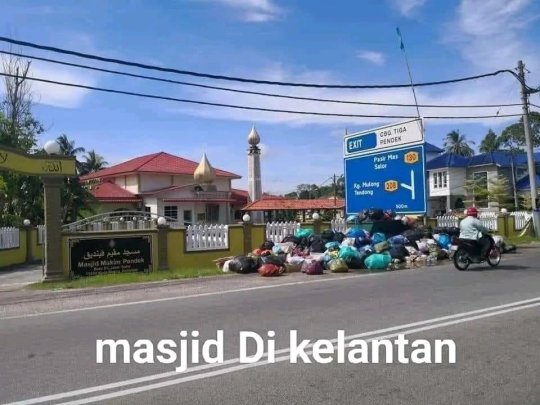
View On WordPress
0 notes
Text
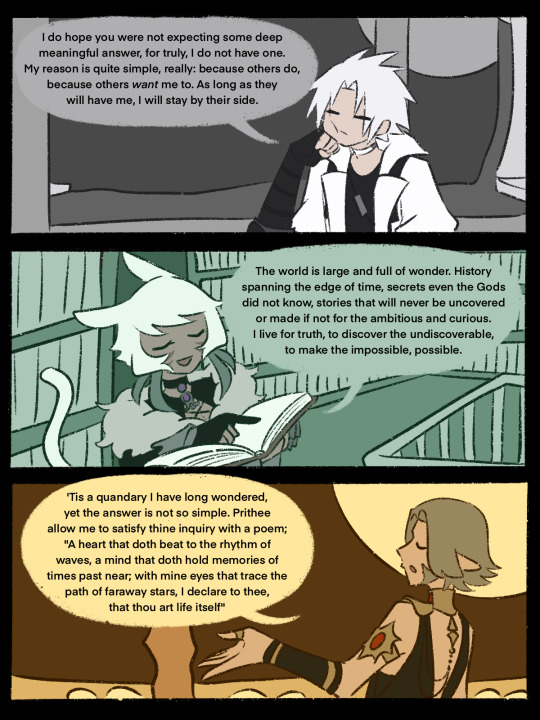
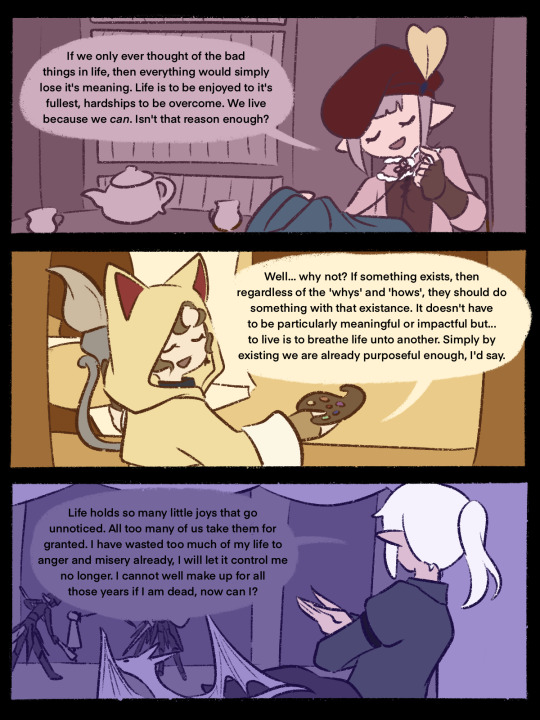

For what do you live?
#meant to post this a lot earlier but it just didnt... feel right?#and now im like fuck it. woe sciosn be upone ye#i was originally gonna have banana(wol) here too but then the amount of panels would be uneven >:(#so i removed her (im srry bby i love u i prommy </3)#anyway. i love them and seeing them fight for their right to exist in ew despite several of then having had#issues and doubts and all that in regards to their own lives and well-being hit me hard#i mean several of them are implied to not mind dying/not caring about surviving and at least one of them is/was explicitly suicidal!#and yet!!!!!!#OUGH#thancred waters#y'shtola rhul#urianger augurelt#alphinaud leveilleur#alisaie leveilleur#g'raha tia#tataru taru#krile mayer baldesion#estinien varlineau#estinien wyrmblood#final fantasy#final fantasy 14#final fantasy xiv#ff14#ffxiv#art#my art#xanders art#digital art#fan art
1K notes
·
View notes
Text
As an environmental problem researcher:especially about water issues (1/2)

(Note: The etymology of "Mamoru"(衛) is "a soldier who patrols to protect the one in the middle." Sanitary Engineering” =”衛生工学”)
Don't look lightly sanitary engineering! : Water quality purification goods welcomed by amateurs
I am an expert in sanitary engineering. Especially in the field of water, I have been doing research that does not fall behind. I also worked on various water-related technologies. Here, a blog covered some kind of water purification technology. Looking at what kind of thing it is, somehow from the lapilli, "Since the components that rejuvenate the microorganisms flow out, this will rejuvenate the microorganisms, expect water purification, and give back to the earth." That's right? ... I'm scared because this is what amateurs think. If we can purify water with such a small item, we don't need water treatment technology, and you don't need sanitary engineering. The sanitary engineering is explained as follows.
@@@@@@@@@@@@@@@@@@
A discipline that applies engineering principles to the prevention of environmental pollution and the conservation of the living environment with the aim of protecting and promoting public health. Since the causes that threaten people's lives and health change with the development of civilization and society, the objects of purpose-oriented sanitary engineering are also purification of air and water from urban water and sewage, noise vibration control, industrial waste control. , Final waste management, radioactive emission management, air conditioning heating and cooling of buildings, control of working environment in factories, planning of local material metabolism facilities, planning and management of air, water and soil environment, location planning, etc. .. The academic fields necessary for this are also (1) physiology, public hygiene, animal and plant ecology, flow science, meteorology, statistics, etc. to set improvement or conservation goals, and (2) civil engineering to take improvement measures. Engineering, chemical engineering, microbial engineering, fluid engineering, thermal engineering, system engineering, etc. (3) Planning mathematics, regional planning, urban planning, economics, etc. for making plans. After World War II, the Department of Sanitary Engineering was established at Hokkaido University and Kyoto University, the Department of Urban Engineering at the University of Tokyo, and the Department of Environmental Engineering at Osaka University. Other universities have related courses in the Faculty of Engineering.
@@@@@@@@@@@@@@@@@@@@@
Well, when I chose sanitary engineering as my career path, I didn't really understand the content, but I was depressed at that time and was told that it was a "dirty place" dealing with "shit, pee". While I was depressed, I decided to go to a dirty place and went on to throw it away. In the above explanation, it is said that there are a wide range of applications, but at the time of my time, the main problem was water, and research was concentrated on waterworks, sewers, rivers and lakes.
Regarding sewage treatment, it is difficult to treat sewage by participating in a project (by students) to check the performance of Jun Ui's "oxidation ditch", which is an evolution of the traditional "activated sludge method". As a premise, sewage treatment is said to be "accepting any wastewater, purifying the water quality properly, and is evaluated for the first time". The maintenance of a plant (facility) is a place where water treatment engineers play a serious role. At sewage treatment plants, activated sludge, a group of microorganisms derived from soil, actively "eats" organic matter in sewage and plays a role in water purification, but that alone is enough to purify water. Is on the way. In addition to organic substances, there are substances that require more advanced removal techniques, such as nitrogen (N) and phosphorus (P). If you try to process it, it will cost a lot.
This is the current state of sewage treatment. What can we say when we look at the goods from that perspective?
@@@@@@@@@@@@@@@@@@@@@@
What is XXXXX? (Author's note: Hidden words)
A microbial activator made mainly from lapilli.
XXXXX will use the microorganisms on the spot as the source, and Mr. microorganisms that have become the source will decompose the dirt.
Just place XXXXX on the flush tank of the toilet, and the flowing water will rejuvenate the Mr. microorganisms.Every time you flush the water in the toilet, the flow of water from the sewage to the river and the sea becomes beautiful.
You can give back to Mr. Earth just by putting it in your toilet!
@@@@@@@@@@@@@@@@@@@@@@@
(From a certain blog. I have something to think about, so I'll keep it anonymous.)
It's ridiculous and not talkative. The pollutants washed away in the toilet are pee, poop, organic matter, nitrogen and phosphorus lumps. Is it possible to expect some water purification effect from lapilli? Also, it is unclear what kind of microorganisms the person who wrote this blog refers to and says that the water purification effect can be expected. There is a section that somehow thinks that microorganisms = water purification. The nerve that can clearly state such an amateur idea on a blog makes the earth cry.
A word of the day: In the first place, thinking about environmental issues on the premise of using a flush toilet is a . Human humiliation. In the first place, we should think about the waste of energy of diluting the solid substance "Unko :shit" and treating it with water to make the activated sludge solid again. You've never heard of a composting toilet that can compost "shit" and "pee", because this person is an amateur. (Apart from that, I don't have a grudge against this blogger, but I was inspired by so much error that I wrote this blog.)
Currently, there is no "sanitary engineering" or "sanitary course" in the Department of Urban Engineering, Faculty of Engineering, University of Tokyo. It seems that it calls itself an "environmental science course". Somehow, it is a name that feels "beauty". I think the original "hygiene" = "protecting life" is a more direct and better name. Well, I think that the people involved in the name change should have thought that it would be better to be neat, and I think that there are many University of Tokyo students who are attracted to the "superficial" coolness. When I was there, most of the students shy away from being dirty because they deal with "shit" and "pee".
Reference HP (actual compost / toilet)
https://www9.plala.or.jp/Jussih/puusee/kpt-vessa.htm
(It seems that you can not connect well from here. You can find it by copying this URL and doing a separate Google search.)
#water issues#sanitary engineering#衛生工学#water purification technology#dirty place#shit#pee#sewage#activated sludge#flush toilet#makes the earth cry#environmental problem researcher#rei morishita
5 notes
·
View notes
Text
Food Week April 26, 2024
Welcome to Food Week April 26. You don’t want to pass over all the cool stuff this week, what with cookie wars, new look Matzo, secret McDonald’s menu items, AI in milk, meats in sweets and a whole lot more. So have a Nuka Cola and Enjoy.
MACRO
Biden Administration raises the minimum salary at which workers can be considered salaried management and therefore not eligible for overtime. to FTC…

View On WordPress
#avian influenza#hydroponics#koch#kroger albertson&039;s#microplastics#popeyes#regenerative agriculture#Sam Adams#water issues
0 notes
Text
I will say that, as someone who takes care of an 8 year old, it is pretty hilarious to think about Dick fighting crime so young. Like there's just packs of animal crackers in the batmobile because Dick will get hungry during the middle of a case. And god forbid Bruce forgets to pack a water bottle for Dick because then he'll just hear a litany of, "I'm thirsty, I need water." I mean, I know Dick is usually depicted as more mature/responsible than your average kid, but it's so funny to think about Bruce and Alfred having to deal with some of those typical kid needs and behaviors.
#let's be real--between bruce and alfred--forgetting a water bottle would not be an issue#but still idk maybe dick runs out and so bruce has to be like SIIIGHHHH and stop at mcdonalds to buy him more water#Dick Grayson
903 notes
·
View notes
Text
putting my prediction on record now that the coming decade is going to see the rise of viral-marketed fancy at-home water filtration systems, driving and driven by a drastic reduction in the quality of U.S. tap water (given that we are in a 'replacement era' where our current infrastructure is reaching the end of its lifespan--but isn't being replaced). also guessing that by the 2030s access to drinkable tap water will be a mainstream class issue, with low-income & unstably housed people increasingly forced to rely on expensive bottled water when they can't afford the up-front cost of at-home filtration--and with this being portrayed in media as a "moral failing" and short-sighted "choice," rather than a basic failure of our political & economic systems. really hope i'm just being alarmist, but plenty of this already happens in other countries, and the U.S. is in a state of decline, so. here's praying this post ages into irrelevance. timestamped April 2023
#apollo don't fucking touch this one#serious post#not a shitpost#hope i forget about this post and have no reason to ever look back on it one day#fyi i'm aware that access to potable water is already a major issue in parts of the U.S. yes i know flint michigan exists#i'm saying that this issue is going to GROW unless local & federal governments work together to fix it.#so it's a matter of if we trust them to fix it. And well--do you?#what are the chances the government just denies there's a problem until the water actually turns brown#at which point it's already been common knowledge for years and people have just become resigned and that's our new normal#i'm mean come on. how many of us already believe that we're being exposed to dangerous pollutants we don't know about and can't avoid#like that's pretty much just part of being a modern consumer. accepting that companies will happily endanger your life for a few pennies#and the most you'll get is like a $50 gift card as part of a class action rebate 20 years down the line#probably the history books will look back on Flint as a warning and a harbinger that went ignored#luxury condos will advertise their built-in top-of-the-line filtration systems--live here and you can drink water straight from your tap!#watch the elite professional class putting $700 dyson water filtration systems on their wedding registry#while the rest of us figure out how to fit water delivery into our grocery budget while putting 90% of our paycheck towards rent#also eggs are $15
5K notes
·
View notes